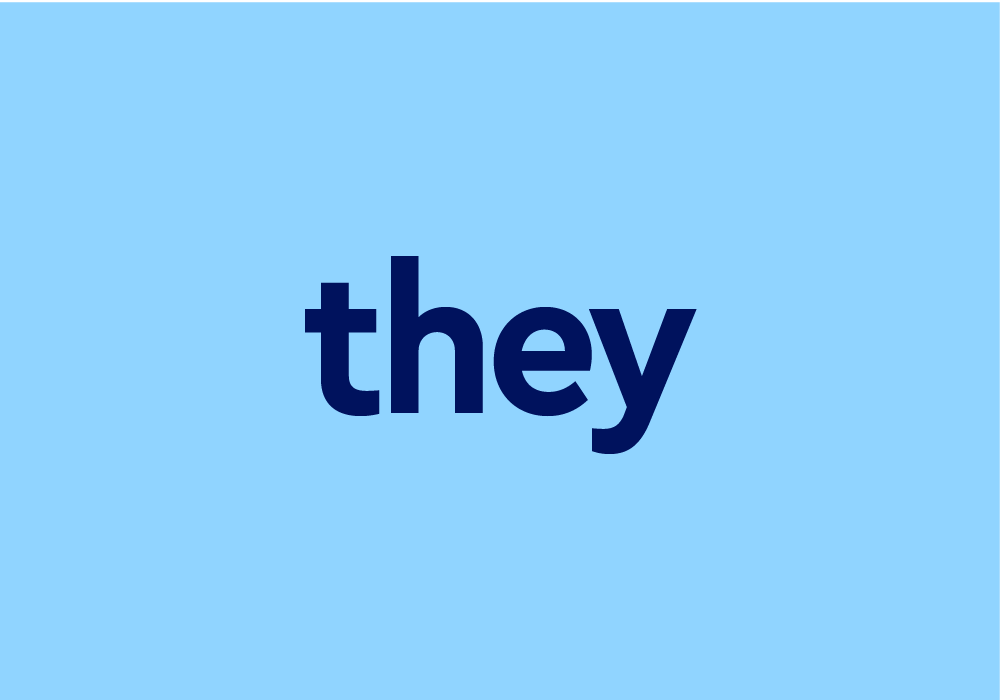Introduction
The use of they/them pronouns as a gender-neutral alternative to he/him and she/her has become increasingly common in recent years, particularly among individuals who identify as non-binary or genderqueer. While some people may view the use of they/them pronouns as unconventional or unnecessary, for many individuals, they are an important way to express their gender identity and feel seen and heard. In this article, we will explore why people use they/them pronouns, the challenges associated with their adoption, and the benefits they can bring to individuals and society as a whole.
Understanding They/Them Pronouns
Traditionally, English pronouns have been binary, with he/him used to refer to male individuals and she/her used to refer to female individuals. However, this binary system does not account for individuals who do not identify as male or female, or who identify as both or neither. They/them pronouns are a gender-neutral alternative that can be used to refer to individuals regardless of their gender identity.
While some people may view the use of they/them pronouns as grammatically incorrect, in fact, they have been used as a singular pronoun for centuries. For example, if someone lost their wallet, we might say “they must be so upset.” Similarly, if we do not know the gender of a person being referred to, we might use they/them as a way to avoid making assumptions.
Why People Use They/Them Pronouns
There are several reasons why individuals may choose to use they/them pronouns, particularly those who identify as non-binary or genderqueer. Here are some of the most common reasons:
- Expressing Gender Identity: For many individuals, using they/them pronouns is a way to express their gender identity and feel seen and heard. Non-binary and genderqueer individuals may not feel comfortable being referred to using binary pronouns, and they/them pronouns provide a way to express their gender identity authentically.
- Challenging Gender Norms: The use of they/them pronouns challenges the gender binary and promotes inclusivity. It acknowledges that gender is not a simple binary, but rather a complex and diverse spectrum.
- Avoiding Misgendering: Misgendering, or referring to someone using the wrong pronouns, can be incredibly distressing for individuals who are non-binary or genderqueer. By using they/them pronouns, we can reduce the risk of unintentional misgendering and create a more welcoming and accepting environment for all individuals.
The Challenges Associated with the Adoption of They/Them Pronouns
While the use of they/them pronouns has become increasingly common, there are still challenges associated with their adoption. Here are some of the most significant challenges:
- Resistance: Some individuals may be resistant to the adoption of they/them pronouns, either because they do not understand their importance or because they feel that they are unnecessary. This resistance can create tension and conflict in social and professional contexts.
- Pronoun Confusion: Using they/them pronouns can be confusing for those who are not familiar with them. It may take time to learn and internalize new pronouns, which can create awkwardness and discomfort in conversations.
- Grammar: Some people argue that the use of they/them pronouns is ungrammatical, and that it undermines the structure and coherence of language. While this argument has some validity, it is important to remember that language is always evolving, and grammar rules change over time to accommodate new forms of expression.
- Pronoun Overload: Some individuals may feel overwhelmed by the number of gender-neutral pronouns that are available. This can create confusion and uncertainty about which pronouns to use, and may lead to unintentional misgendering
The Benefits of Using They/Them Pronouns
Despite the challenges associated with the adoption of they/them pronouns, there are significant benefits to their use. Here are some of the most important:
- Promoting Inclusivity: Using they/them pronouns promotes inclusivity and acknowledges the diversity of gender identities. It creates a more welcoming and accepting environment for individuals of all genders, and sends a powerful message about the importance of respecting and valuing gender diversity.
- Reducing Misgendering: The use of they/them pronouns can help to reduce the risk of unintentional misgendering, which can be distressing for individuals who are non-binary or genderqueer. It allows individuals to be seen and addressed in a way that is affirming of their gender identity.
- Normalizing Gender Diversity: The use of they/them pronouns helps to normalize gender diversity and challenge the idea that gender is a simple binary. It encourages individuals to think critically about gender norms and stereotypes, and promotes a more nuanced and inclusive understanding of gender.
- Supporting Mental Health: The use of they/them pronouns can have significant mental health benefits for individuals who are non-binary or genderqueer. It can help to reduce feelings of isolation and invalidation, and promote a greater sense of self-acceptance and self-worth.
Conclusion
In conclusion, the use of they/them pronouns is an important way for individuals to express their gender identity and feel seen and heard. While there are challenges associated with their adoption, the benefits they can bring to individuals and society as a whole are significant. By promoting inclusivity, respect, and accessibility, we can create a more welcoming and accepting society for people of all gender identities. It is important to continue the conversation about they/them pronouns, to educate ourselves and others, and to work towards a more equitable and inclusive future.

Leave a Reply